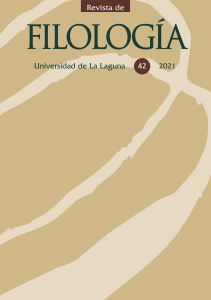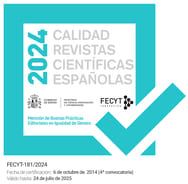Rethinking Espinosa: his role in the debates on the aesthetic vindication of Cubism and Picasso’s art in the Canarian cultural context (1920-1930)
Abstract
This study aims to reflect on the role Agustín Espinosa played in the vindication of both Cubism and the figure of Pablo Ruiz Picasso during the first third of the Spanish 20th century. To this end, it starts from a philological and historiographical analysis of Tenerife Gaceta de Arte, vehicle of dissemination of the artistic and cultural renewal in Spain. In this sense, the Picassian discourse of the Tenerife magazine is based on the Parisian surrealist group, headed by André Breton, as well as on a series of literary precedents present in the Canary Islands in the 1920s. When deepening into Espinosa’s work, it is possible to formulate new relational approaches between the literary images of the Canary poet and the Cubist dynamics, together with the defence of the movement.
The works published in this journal are the property of their respective authors, who grant the Revista de Filología de la Universidad de La Laguna the right of first publication, as stated in our Authorship Rights Policy.









